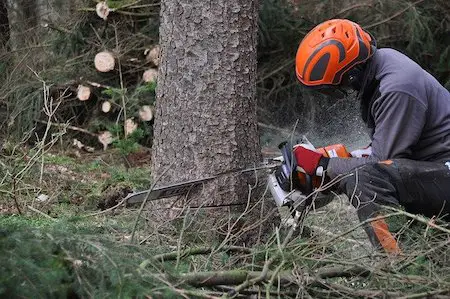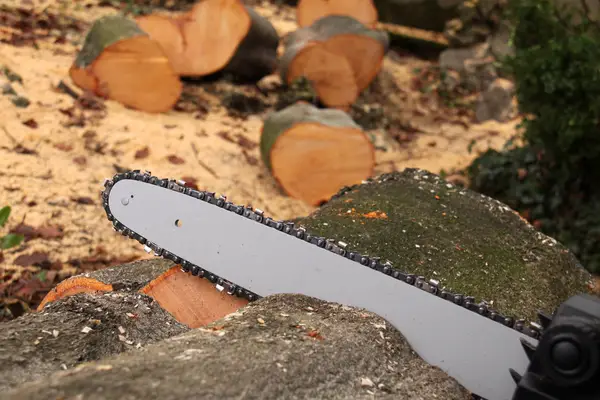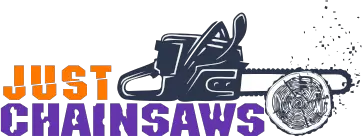Chainsaws are a common tool used for cutting wood and other materials. But did you know that running one with the brake on can cause damage to the chain? That’s because when the engine is idling, it does not produce enough power to keep up with how quickly the blade spins. When this happens, your chainsaw motor will overheat and may even catch fire.

There’s also a risk that when you release the brake, there is an initial surge that could cause your hands to slip off. This can lead to serious injury or death in some cases.
Running a chainsaw with the brake on can be dangerous for you and anyone in your vicinity. The chainsaw will not cut, but it still creates sparks that can cause fires or startle nearby pets.
It also doesn’t allow the saw to cool down enough which increases the likelihood of overheating and breaking down.
Chainsaw Chain Brakes
Chainsaw chain brakes are important safety and operating features on a chainsaw. They allow the operator to stop the chain in order to avoid kickback or blade contact with objects such as logs, branches, or rocks.
Chainsaws can be dangerous when operated improperly and it is important for operators to use the correct type of brake that suits their needs.

A good rule of thumb is if you’re using your saw for felling trees then you’ll need a full wrap-around brake; however, if your saw will be used for limbing, bucking, or cutting firewood then a front-mounted brake is all that’s needed.
To prevent injury from happening, chainsaw companies have designed brakes that stop the blade when it does kickback so it can’t hurt anyone. Chainsaw chain brakes are among some of the most important features on any chain saws.
Now that you know what can go wrong with running a chainsaw with the brake on, be sure to avoid these mistakes when using your saw! It’s important for safety reasons and it will help prolong the life of your machine.
Should chainsaw brake go forward or back
It’s important to know which direction the chain should spin in order to keep your hands away from moving parts, so we’re here to give you some tips on what direction the chain should go when using a chainsaw brake.
If you want the saw blade to stop spinning immediately, place the brake lever in front of where your hand would be holding onto the handle. This will cause your saw blade to slow down until it eventually stops.
However, if you want the chain to keep spinning at a faster speed but not as fast as normal then place your brake lever behind where your hand would be positioned on the handle.
Cutting firewood
If you are using this saw for cutting firewood or bucking then placing it in front will allow it to stop quickly and prevent kickback from happening while moving your hands back slightly with cause less friction between them and the blade which reduces wear on both parts.
Felling trees or other large projects
For felling a tree, limbing it, bucking logs, etc. make sure that you put the brake lever right next to where your hand is holding onto it so it’s safer when trying to avoid kickback.

On larger chainsaws with full bodyguards that extend past where you would be holding onto the handle – different rules will apply compared to the smaller models mentioned above which do not have these extended safety features.
What should you do if your chainsaw chain brake is stuck?
Chainsaws are powerful tools for projects, but accidents happen.
Even if you know what to do in a normal situation, when the chain brake gets stuck and your chainsaw starts to jerk around uncontrollably, it’s a whole different ballgame.
If that ever happens to you, then here are some safety tips worth knowing:
First, never try to use a chainsaw with a chain brake stuck while it is still running. Always cut the power off before touching anything else on the saw. If there is no way of cutting power from the tool without risk of injury or equipment damage then wait until after safe shutdown procedures are complete.
Next, if you’re using an electric chainsaw, unplug it to ensure it doesn’t switch on again accidentally while you are working with any parts of your saw or equipment near its moving components (chain).
Once power is cut off and disconnected from the tool; place the brake lever in front. This will disengage both brakes at once without requiring further disassembly for removal or adjusting manually which can be difficult if not done right.
Once that’s finished, carefully examine all areas around where you’d be holding onto the handle to make sure nothing was loosened during this mishap. You then need to inspect your blade guard assembly as well since they may have become misaligned too when trying to stop kickback motion.
If everything looks good then try starting up again before you go back to work.
